
Thursday December 29, 2022
By Liz Clarke
Quick, agile, adept with both feet and laserlike with his headers, he helped Brazil win three World Cup titles
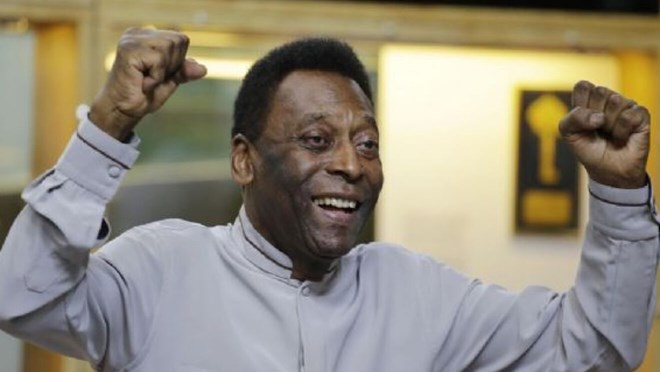
He was hailed as the king of soccer, but it was Pelé’s other nickname — the Pérola Negra, or Black Pearl — that best evoked the rare brilliance he packed into his diminutive frame. Pelé, who for decades staked a claim as the world’s most celebrated athlete, died Dec. 29 at 82.
His manager Joe Fraga confirmed the death to the Associated Press. Additional details were not immediately available, but Pelé had been hospitalized in São Paulo, Brazil, for the past month, undergoing treatments for colon cancer.
advertisements
Pelé’s eminence in soccer spanned three decades in which he helped Brazil win World Cup titles in 1958, 1962 and 1970. Quick, agile, adept with both feet and laserlike with his headers, Pelé was built for scoring and blessed with a jazz master’s improvisational skills on the soccer pitch.During his 22-year professional career, Pelé appeared in more than 1,300 matches and scored almost as many goals, yet he was hardly a one-man show. He saw the field the way a chess champion sees the board — two, three, four moves ahead — with the tactical savvy to pass to teammates better positioned to strike.
He was barely 20 when the president of Brazil proclaimed him an official national treasure. It was an honorific and an economic restraint; it barred him from being transferred to a wealthy European club willing to pay hugely for his services. Pelé was an asset too essential to the national interest to export.
Nonetheless, born and reared in poverty, the soccer champion formally known as Edson Arantes do Nascimento was among the world’s first athletes to recognize the power and riches of the personal brand.
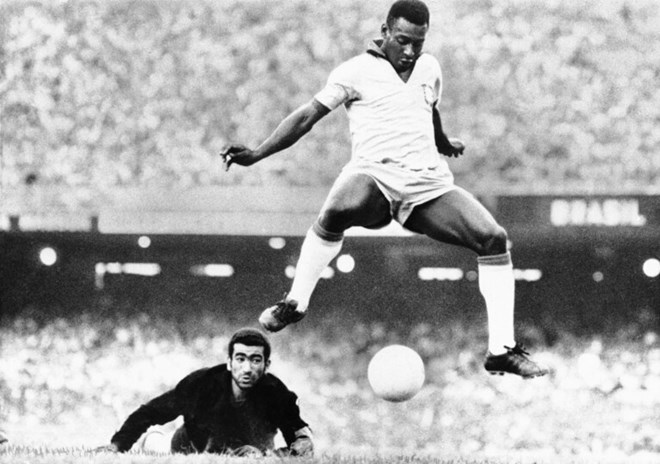
Pelé in 1969. (AP)

Pelé in 1969. (AP)
Later in his career, after retiring from Brazilian club Santos, which was the country’s dominant team in the 1960s, Pelé took his global aura to America, signing with the New York Cosmos of the North American Soccer League in 1975, when he was in his mid-30s. The deal was reportedly brokered by Secretary of State Henry Kissinger, one of Pelé’s ardent admirers and a believer in the international goodwill spawned by “the beautiful game.”
The genius of Pelé’s play prompted a 48-hour cease-fire in at least one civil war as Nigerians put their arms down to behold his mastery during a 1969 exhibition in Lagos.
It wasn’t just Pelé’s skill that transcended boundaries; so, too, did his fame. He never knew the origin of his nickname. “Pelé” has no meaning in Portuguese, but it was simple enough for a child to pronounce and make itself understood in all languages, as did Pelé’s signature smile.
As he remarked in a 2001 interview, “Wherever you go, there are three icons that everyone knows: Jesus Christ, Pelé and Coca-Cola.”
A year earlier, the international governing body of soccer, FIFA, named Pelé and Argentina’s Diego Maradona co-players of the 20th century. The question of who was the game’s greatest of all time — Pelé, with his three World Cup titles, or Maradona, with his one championship in four World Cup appearances — roiled passions well beyond South America. It was a debate that offended Pelé.
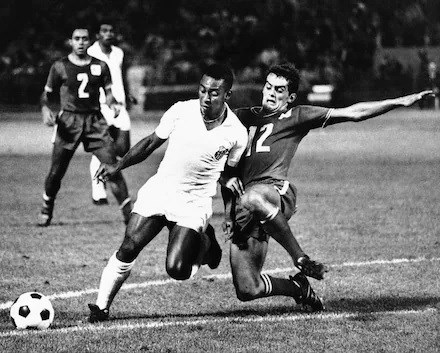
Pelé, in an exhibition game, drives past Oakland Clipper Trond Hoftvedt to score in 1967. (AP)
Pelé did not hide his lack of regard for Maradona, the Argentine 20 years his junior whom he deemed a bad role model because of his drug addiction, personal scandals and inept turn as Argentina’s national coach for the 2010 World Cup.
Nonetheless, Pelé’s behavior off the field was not above reproach. He had frequent extramarital dalliances and refused to recognize one of his daughters as his own despite DNA tests proving he was her father.
To the soccer stars who supported Pelé, there was no doubt about who was the greatest. They were consumed by another debate: Was Pelé invented for soccer, or was soccer invented for Pelé?
“Pelé was the only footballer who surpassed the boundaries of logic,” Dutch-born great Johan Cruyff once said.
Raised a Roman Catholic, Pelé said he remained a man of faith and saw his life’s work as fulfilling God’s destiny for him. That destiny, however, did not imply a vow of poverty, chastity or single-mindedness.
Pelé saw wealth as power, and he used his fame in sometimes questionable business endeavors. Over the years he made and lost fortunes and was a pitchman for video games, soft drinks, computer products and pharmaceuticals.
Rising from near-poverty, he was sometimes humbled and astonished by his success.
“It’s not easy to separate Edson from Pelé psychologically,” he wrote in one of his autobiographies. “Pelé has taken on a life of his own. He overtook everything. I sense the dichotomy between Edson and Pelé every time I take out my Mastercard. On one side is the image of me doing a bicycle kick together with the signature of Pelé, and on the other is my real signature.”
But he had no ambivalence, no trace of doubt about the ability behind the brand.
“In music, there is Beethoven and the rest,” Pelé said in 2000. “In football, there is Pelé and the rest.”
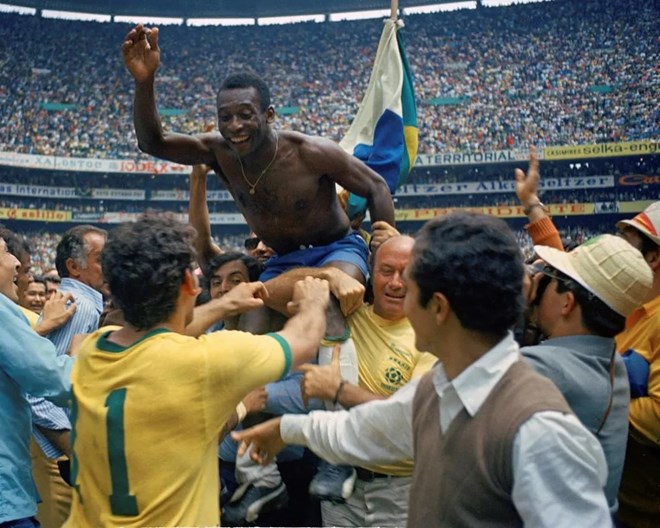

Learning from his father
Edson Arantes do Nascimento was born in Três Corações in Brazil’s Minas Gerais state in October 1940. His birth certificate is dated the 21st, but he observed Oct. 23 as his birthday.
He learned to play soccer from his father, João Ramos do Nascimento, a minor league player who found work later in life as a government clerk. Pelé’s upbringing was so austere that he reportedly fashioned soccer balls from wads of paper stuffed into socks or used grapefruits instead.
When Pelé was 5, his father joined a football club in the São Paulo suburb of Bauru and relocated his wife and three children there. To help subsidize the family’s meager income, Pelé shined shoes as a child. But his love of soccer was so great, and his lack of interest in his studies so profound, that he quit school after the fourth grade to play the game in the streets and ply a short-lived trade as a cobbler’s apprentice.
At 10, he started getting coaching from Waldemar de Brito, a friend of his father’s and a former player for Brazil’s national team. Pelé developed quickly. And with an introduction from de Brito, he signed his first professional contract, with Santos, at 15.
Pelé was called up to Brazil’s national team at 16. And he made his World Cup debut at 17 — the youngest player at that point to compete in the World Cup. Pelé scored six goals in the 1958 tournament, including a hat trick in the semifinals against France and two goals in the 5-2 final over Sweden.
When the 1962 World Cup up got underway in Chile, he was no longer a teenage phenom. Despite his modest size, at 5-foot-8, Pelé was widely acclaimed as the world’s best player. He scored a goal in Brazil’s 2-0 victory over Mexico in the first game, but an injury ended his tournament. Brazil went on to defend its title without him.
With Pelé injured again in 1966, Brazil was unable to defend its title.
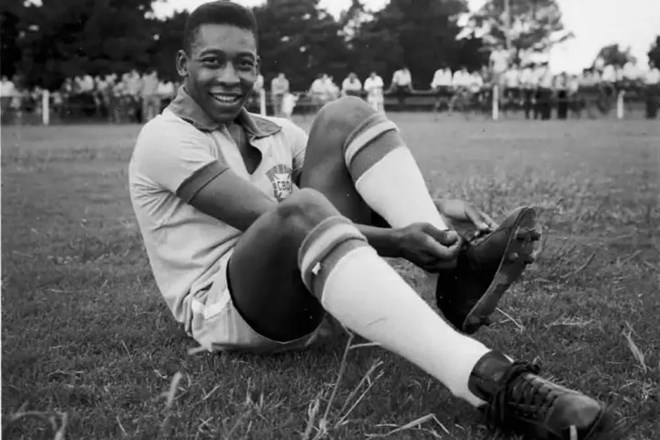
Pelé was 29 when the 1970 World Cup kicked off in Mexico. Pelé scored the opening goal in Brazil’s 4-1 victory over Italy in the final. “I told myself before the game, ‘he’s made of skin and bones just like everyone else,’ ” said Italy’s Tarcisio Burgnich, who defended Pelé in the World Cup. “But I was wrong.”
Goalkeeper Costa Pereira said much the same after his Portuguese club fell to Santos in the 1962 Intercontinental Cup. “I arrived hoping to stop a great man,” Pereira said, “but I went away convinced I had been undone by someone who was not born on the same planet as the rest of us.”
After retiring from Brazilian soccer in 1974 and reportedly $1 million in debt after bad investments, Pelé signed a three-year, $2.8 million contract with the New York Cosmos of the North American Soccer League. Sports Illustrated later reported the nascent league’s average attendance jumped nearly 80 percent after he came to the United States.
Pelé led the Cosmos to the league championships in 1977. He played his final game — an exhibition against Santos at Giants Stadium — in which he competed for his American club in one half and his former Brazilian club the other half.
Pelé’s marriages to Rosemeri dos Reis Cholbi and Assíria Lemos Seixas ended in divorce. He was linked romantically for many years to the model Xuxa, who was 17 when they began to date in 1981. In 2016, he married Marcia Aoki, a business executive 32 years his junior.


Pelé had at least six children among his marriages and other relationships, including daughter Sandra from an affair with a housemaid. Based on DNA evidence, Sandra successfully sued in Brazilian court for legal recognition and also wrote a book titled “The Daughter the King Didn’t Want.” She died of cancer in 2006.
His son Edson “Edinho” do Nascimento, a former goalkeeper for Santos, was arrested in 2005 in a money-laundering case and in 2017 received a sentence of almost 13 years. He was allowed to serve his sentence under an arrangement that permitted him to work for Santos on player development.
Pelé wrote at least two autobiographies and dabbled in acting and composing. He was tapped as a United Nations’ ambassador for ecology and the environment in 1992. From 1995 to 1998, he was Brazil’s minister of sport.
Pelé’s health problems mounted after age 65. He underwent eye surgery for a detached retina, had a hip replacement and was hospitalized for a urinary tract infection.
At 74, he signed a lifetime contract with Santos that included a licensing deal for merchandise marking their achievements together.
Nearly four decades after kicking his last competitive ball, Pelé was still building a legacy that lifted a nation, and his sport, in a new century. “Pelé was one of the few who contradicted my theory,” artist Andy Warhol mused after completing his silk-screen portrait of the soccer great in the late 1970s. “Instead of 15 minutes of fame, he will have 15 centuries.”
